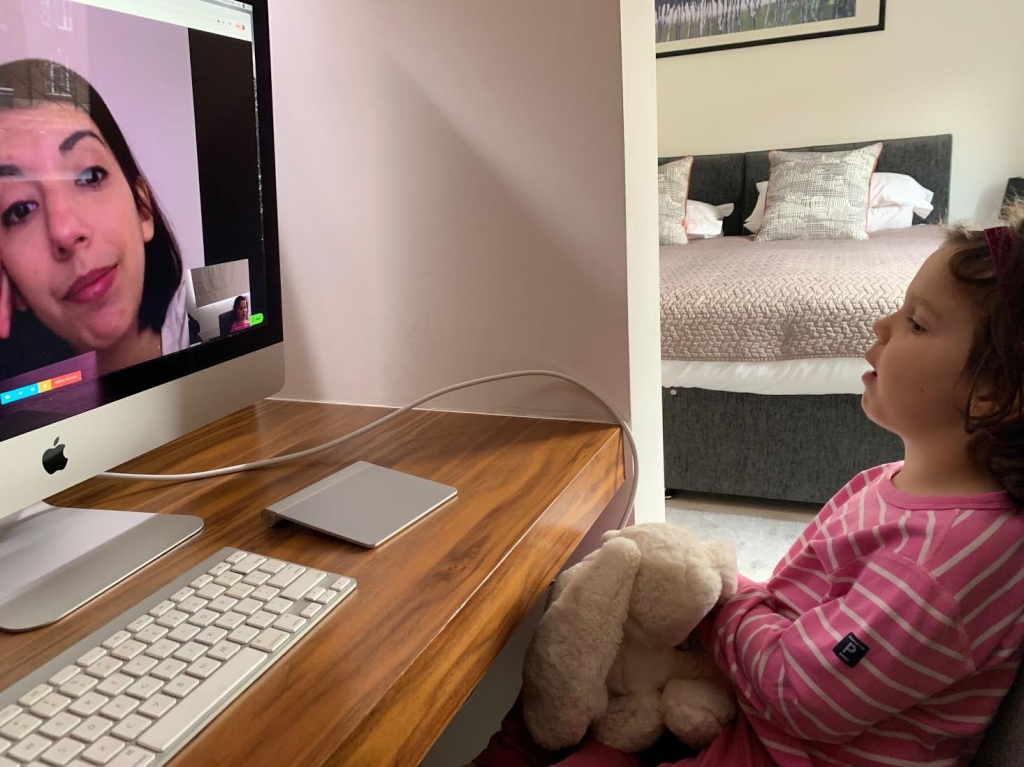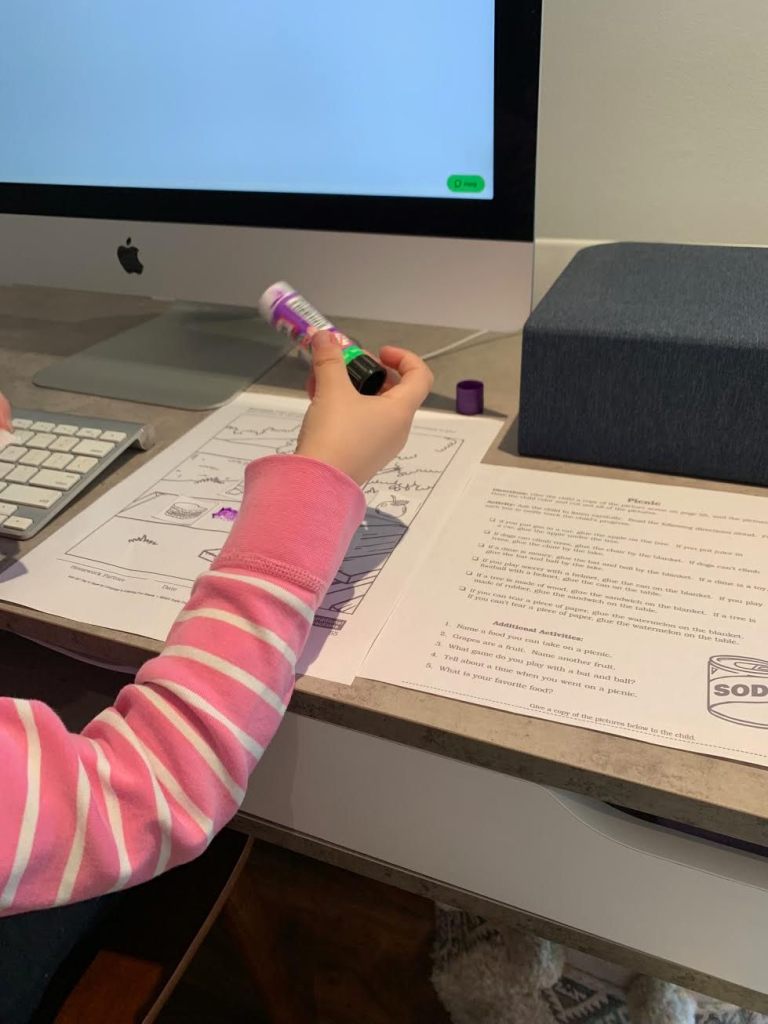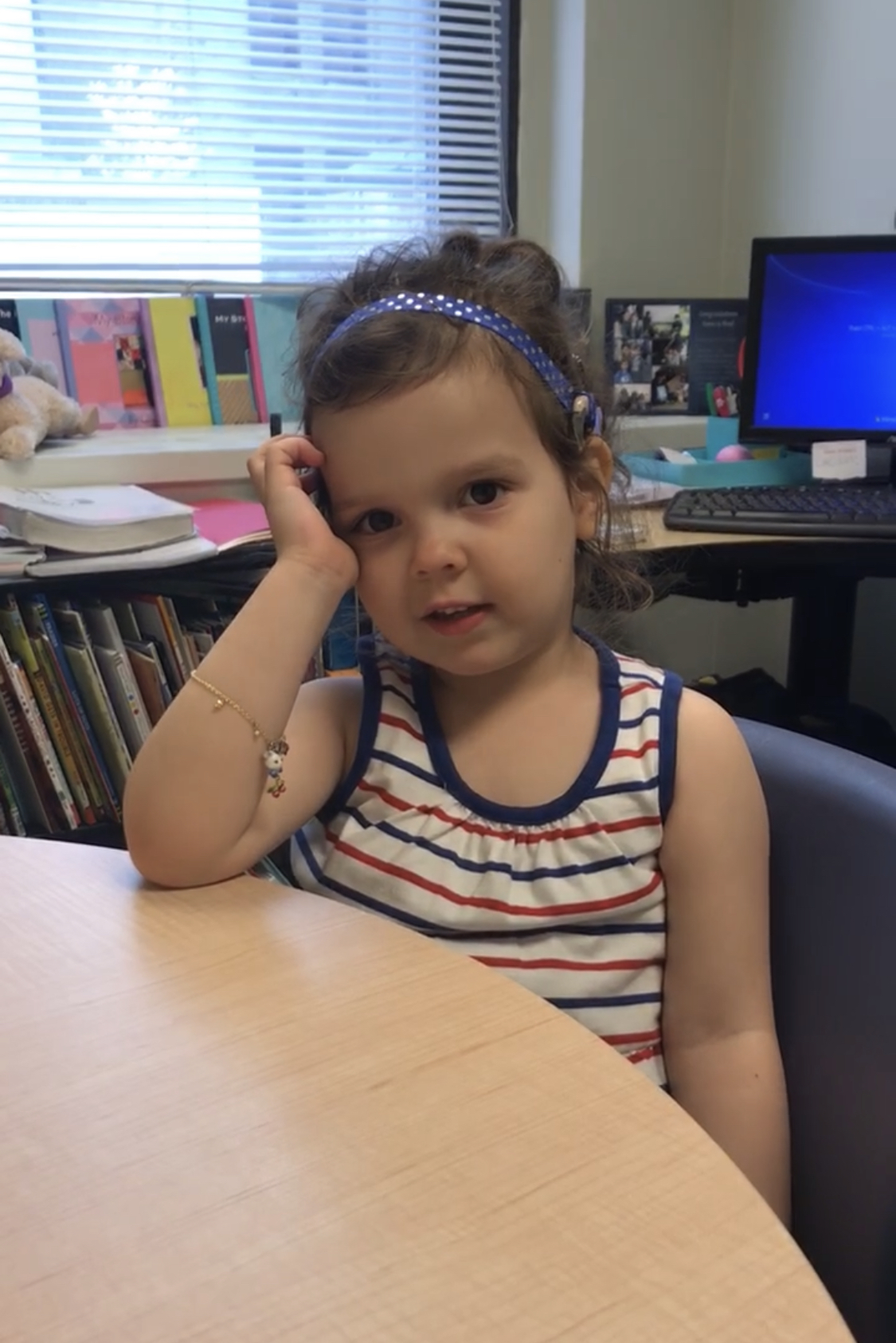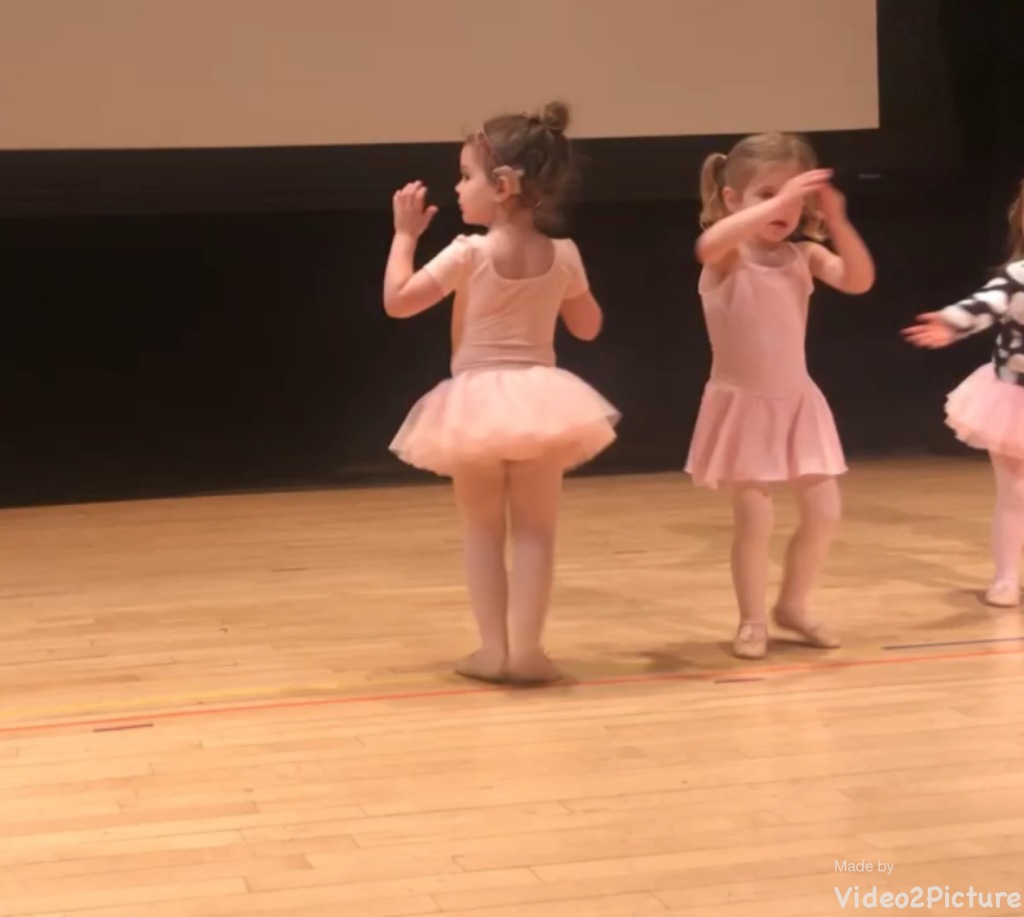One of the major drawbacks to moving to London is the fact that speech services for kids with hearing loss is significantly less than what we enjoyed in New York City. For kids like Sonya who have cochlear implants and are oral auditory (as opposed to using sign language), options seem limited. As Sonya is high functioning, she was told she did not qualify for any speech services through NHS.
For the past ten months, Sonya has continued to work with her NYC-based speech therapists via teletherapy. Once a week, Sonya has a video conference with her speech therapist, for 45 minutes to an hour. Despite an ocean’s distance, Sonya and her therapists in real time:
- Do a sound check in which the speech therapist says non-sensical sounds or silly words and Sonya is to repeat them (typically we have her take off one processor and do each ear, then both ears);
- Play listening games that involve following multiple directions; and remembering sequences of events to help improve her auditory memory;
- Listen to a story and then retell the story in her own words;
- As we like to limit screen time, our speech therapist has me print-out work to do during the week, rather than rely solely on computer games. Sonya and the speech therapist will do this work over VC as well – with the speech therapist giving tricky placement directions (e.g. “place the sun on the top right of the picture under the cloud”).
- Discuss news each week and offer support and suggestions.

Of course, teletherapy is not a perfect solution. For one, it’s expensive. We pay $130 per session. Further, video-conferencing technology, for all its benefit, just isn’t as good as in-person speech therapy. Sonya struggles hearing certain sounds over the computer (so I will repeat them, to ensure it is just the computer speaker sound and not her ears that are impacting her hearing). Also, technology has glitches. Computer games sometimes freeze, or screen sharing doesn’t work as well as we would like.

Despite some frustrations, overall, I feel teletherapy has been a good option for us at this time. We have moved countries with a very different system, but I do not feel that Sonya’s speech has derailed as a result. Further, Sonya loves her weekly 45-minute sessions, and I do too! It’s lovely to stay connected to her beloved therapists and has offered us a sense of stability during a rather chaotic time. Moving is always stressful, but having people who can be there (even if on screen) can make all the difference.
For those interested in accessing the specialists at CHC through teletherapy, check out the program overview. I am happy to answer any additional questions as well!




